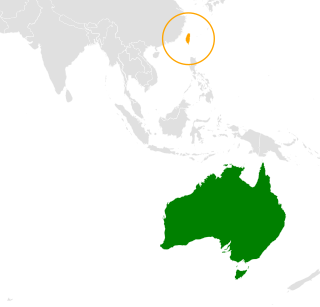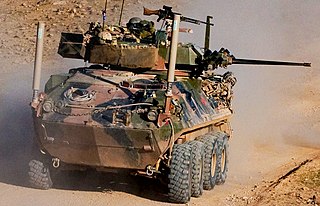
The Royal Australian Navy (RAN) is the naval force of the Australian Defence Force (ADF). The professional head of the RAN is Chief of Navy (CN) Vice Admiral Mark Hammond AM, RAN. CN is also jointly responsible to the Minister of Defence (MINDEF) and the Chief of Defence Force (CDF). The Department of Defence as part of the Australian Public Service administers the ADF.

The Australian Defence Force (ADF) is the military organisation responsible for the defence of the Commonwealth of Australia and its national interests. It has three branches: the Royal Australian Navy (RAN), Australian Army and the Royal Australian Air Force (RAAF). The ADF has a strength of just over 89,000 personnel and is supported by the Department of Defence and several other civilian agencies.

The ministerfor Defence, also known as the Defence minister, is the minister of state of the Commonwealth of Australia charged with overseeing the organisation, implementation, and formulation of strategic policy in defence and military matters as the head of the Department of Defence. The Defence minister directs the government’s approach to the Australian Defence Organisation and the Australian Defence Force. The current Defence minister is Richard Marles, who is concurrently serving as deputy prime minister of Australia, he was appointed by Prime Minister Anthony Albanese in May 2022 following the 2022 Australian federal election.

The arms industry, also known as the defense industry, military industry, or the arms trade, is a global industry which manufactures and sells weapons and military technology. Public sector and private sector firms conduct research and development, engineering, production, and servicing of military material, equipment, and facilities. Customers are the armed forces of states, and civilians. An arsenal is a place where arms and ammunition – whether privately or publicly owned – are made, maintained and repaired, stored, or issued, in any combination. Products of the arms industry include weapons, munitions, weapons platforms, military communications and other electronics, and more. The arms industry also provides other logistical and operational support.
Ireland is one of five members of the European Union that are not members of NATO. The country has a longstanding policy of military neutrality: it does not join military alliances or defense pacts, or take part in international conflicts. The nature of Irish neutrality has varied over time. Ireland declared itself a neutral state during the Second World War, and during the Cold War it did not join NATO nor the Non-Aligned Movement. Since the 1970s, some have defined it more broadly to include a commitment to "United Nations peacekeeping, human rights and disarmament". Recent Irish governments have defined it narrowly as non-membership of military defensive alliances. The compatibility of neutrality with Ireland's membership of the European Union has been a point of debate in EU treaty referendum campaigns since the 1990s. The Seville Declarations on the Treaty of Nice acknowledge Ireland's "traditional policy of military neutrality". The Irish Defence Forces have been involved in many UN peacekeeping missions.

Bilateral relations exist between Australia and Japan.
Defence Australia is a department of the Government of Australia charged with the responsibility to defend Australia and its national interests. Along with the Australian Defence Force (ADF), it forms part of the Australian Defence Organisation (ADO) and is accountable to the Commonwealth Parliament, on behalf of the Australian people, for the efficiency and effectiveness with which it carries out the Government's defence policy.
The Defence Industry of Pakistan, under the Ministry of Defence Production, was created in September 1951 to promote and coordinate the patchwork of military production facilities that have developed since independence. The ministry also includes seven other specialized organizations devoted to research and development, production, and administration.
This article provides information on the industrial sector in Victoria (Australia) that supplies goods and services to defence and military customers and associated supply chain.
The defense industry of Russia is a strategically important sector and a large employer in Russia. Combined, the US and Russia account for 57% of all major weapons exports.

Manufacturing in Australia peaked in the 1960s at 25% of the country's gross domestic product, and has since dropped below 10%. At one stage manufacturing employed almost a third of Australia's workforce. Automotive manufacturing in Australia began in the 1920s and came to an end in 2017.

Aircraft manufacturing is an important industrial sector in Russia, employing around 355,300 people. The dissolution of the Soviet Union led to a deep crisis for the industry, especially for the civilian aircraft segment. The situation started improving during the middle of the first decade of the 2000s due to growth in air transportation and increasing demand. A consolidation programme launched in 2005 led to the creation of the United Aircraft Corporation holding company, which includes most of the industry's key companies. After 2022, reviving the passenger aircraft industry in Russia became the main goal.

Relations between the Commonwealth of Australia and the Republic of China, formerly the Qing dynasty, date back to 1909. Since 1972, the political status and legal status of Taiwan have been contentious issues. Australia and Taiwan share partnership in the inter-governmental Global Cooperation and Training Framework (GCTF) activities.
The Department of Supply and Development was an Australian government department that existed between April 1948 and March 1950.

The defence industry sector of India is a strategically important sector in India. India has one of the world's largest military forces with a strength of over 14.4 lakh active personnel. It has the world's largest volunteer military of over 51 lakh personnel. The total budget sanctioned for the Indian military for the financial year 2021 is ₹4.78 lakh crore. It has the third largest annual defence budget behind USA and China. It is the second largest defence importer behind Saudi Arabia making up 9.2% of global arms import. India has a domestic defence industry of which 60% is government owned. The public sector includes NTRO, CSIR, PRL, DRDO and its 50 labs, 4 defence shipyards, 12 defence PSUs. India has a new defence procurement, acquisition and manufacturing policy to reduce imports and enhance domestic manufacturing.

The defense industry of Ukraine is a strategically important sector and a large employer in Ukraine. After working for several decades mostly for the arms export markets, in 2014 it has moved significantly into increased Ukrainian military procurement since the start of the war in Donbas.
The 1987 Defence White Paper, titled The Defence of Australia, was a white paper published by the Australian Department of Defence during the Hawke government introduced by Minister for Defence Kim Beazley.

Dassault Mirage III Australian procurement was a transaction between the French and Australian governments which led to the procurement of the French designed fixed wing jet aircraft, the Mirage III, for the Royal Australian Air Force (RAAF). In the late 1950s the Australian government announced its intention to modernize its air force with state of the art technology and the French manufacturing company Dassault won the bid over the American Lockheed when the Australian government agreed to buy over 100 Mirages at an estimated cost of AUS$193.7 million in the early 1960s.
The defense industry of South Korea is the main supplier of armaments to the Republic of Korea's Armed Forces. Originally reliant on the United States to supply weapons to its armed forces, South Korea started to manufacture its own weapons through the country's modernization and military reforms. Today, South Korea enjoys a robust defense industry and is the world's 8th largest weapons exporter.

Project Waler was an unsuccessful Australian defence procurement project which sought to replace the Australian Army's M113 armoured personnel carriers with more capable armoured fighting vehicles (AFVs). It was initiated in 1980 and cancelled in 1985 without any vehicles being procured.













